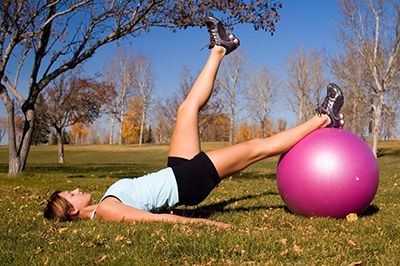The Rehabilitation Process
What to do if you experience injury

Acute Stage (0-48 hrs):
- Protect
- Rest
- Ice
- Compression
- Elevation
Sub-Acute Stage (48 hrs – 7-10 days):
- Hot and Cold Treatment
- Active movement (non load bearing)
- Isometric exercises...Isotonic...Concentric/Eccentric
- Gentle dynamic exercises and passive stretching
- PNF technique
- Massage
Active Rehabilitation Stage (7-10 days to 5-6 weeks):
- Active mobilisation exercises
- Active strengthening exercises (Dynamic – no bodyweight – partial bodyweight- full bodyweight)
- Balance/Proprioception
- Co-ordination
- Endurance
Functional Rehabilitation Stage (5-6 weeks onwards)
Proprioception is our body's ability to sense movement within joints and joint position, providing spacial awareness. A correctly functioning proprioceptive system is important in everyday movements and especially in sporting movements where precise coordination is crucial. Receptors alert our brains how much tension and weight is being used by the muscles and joints. This can be progressively improved by the following functions:
- Co-ordination of multi-action skills
- Improving functional skills
- Improving balance
- Improving speed of movement
- Greater weight bearing control
- Improving reaction times
Proprioceptive Stages
Stage 1: Static training (balance in standing)
- Stable base
- Stable base with movement
- Unstable base i.e. unilateral wobble board or stability disks
- Unstable platform e.g. Boson ball
Stage 2: Dynamic training (striding, jumping, hopping)
- Low
- High
- Change of direction
- Surface
Stage 3: Static training (change of direction)
- Change in speed
- Rate of acceleration
- Deceleration
Stage 4: Assess
Progression within the stages:
- Non weight bearing into weight bearing
- Single joint movement progressing to multiple joint movement
- Symmetrical movements progressing to asymmetrical movements
